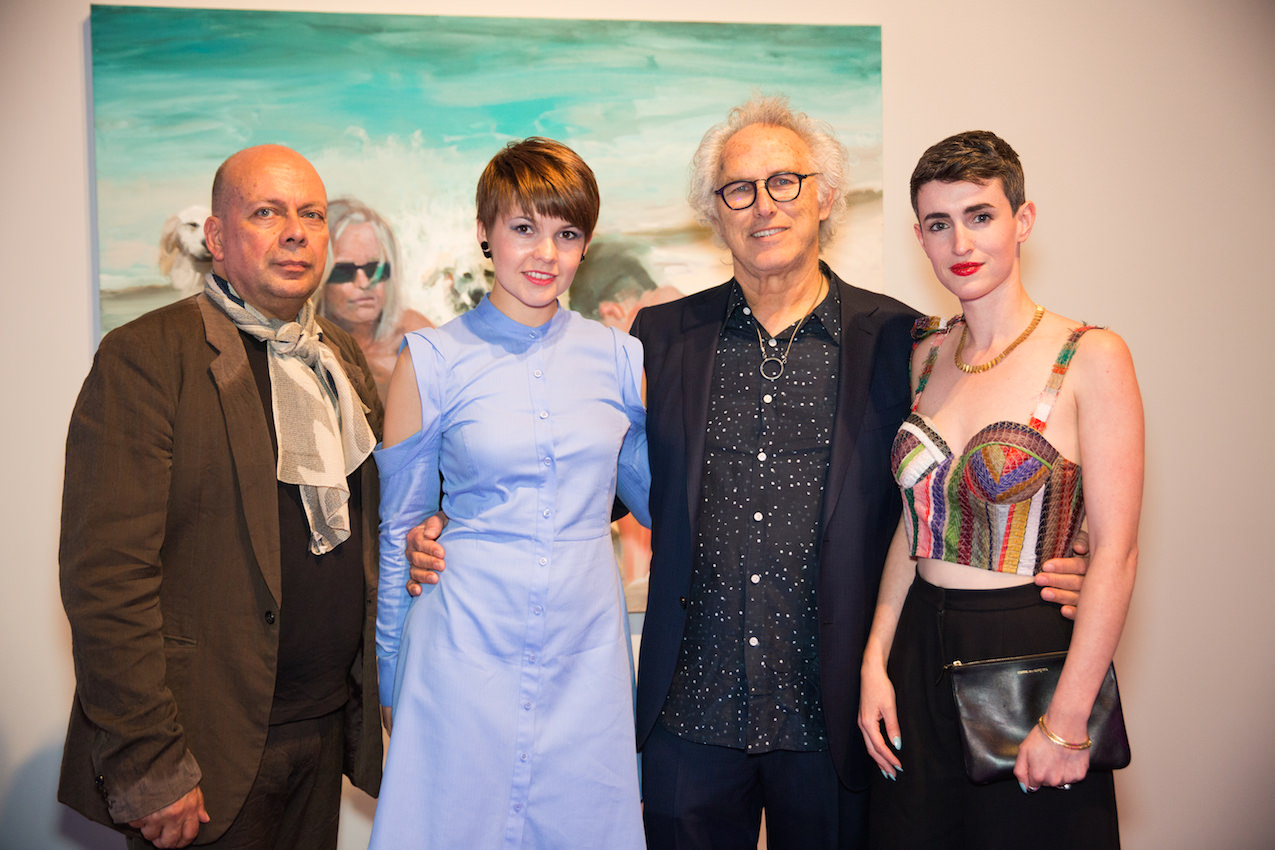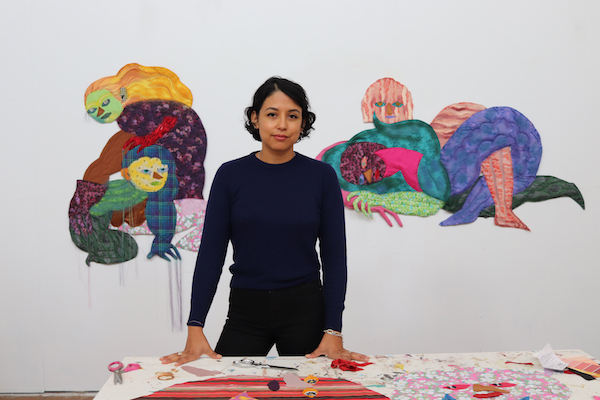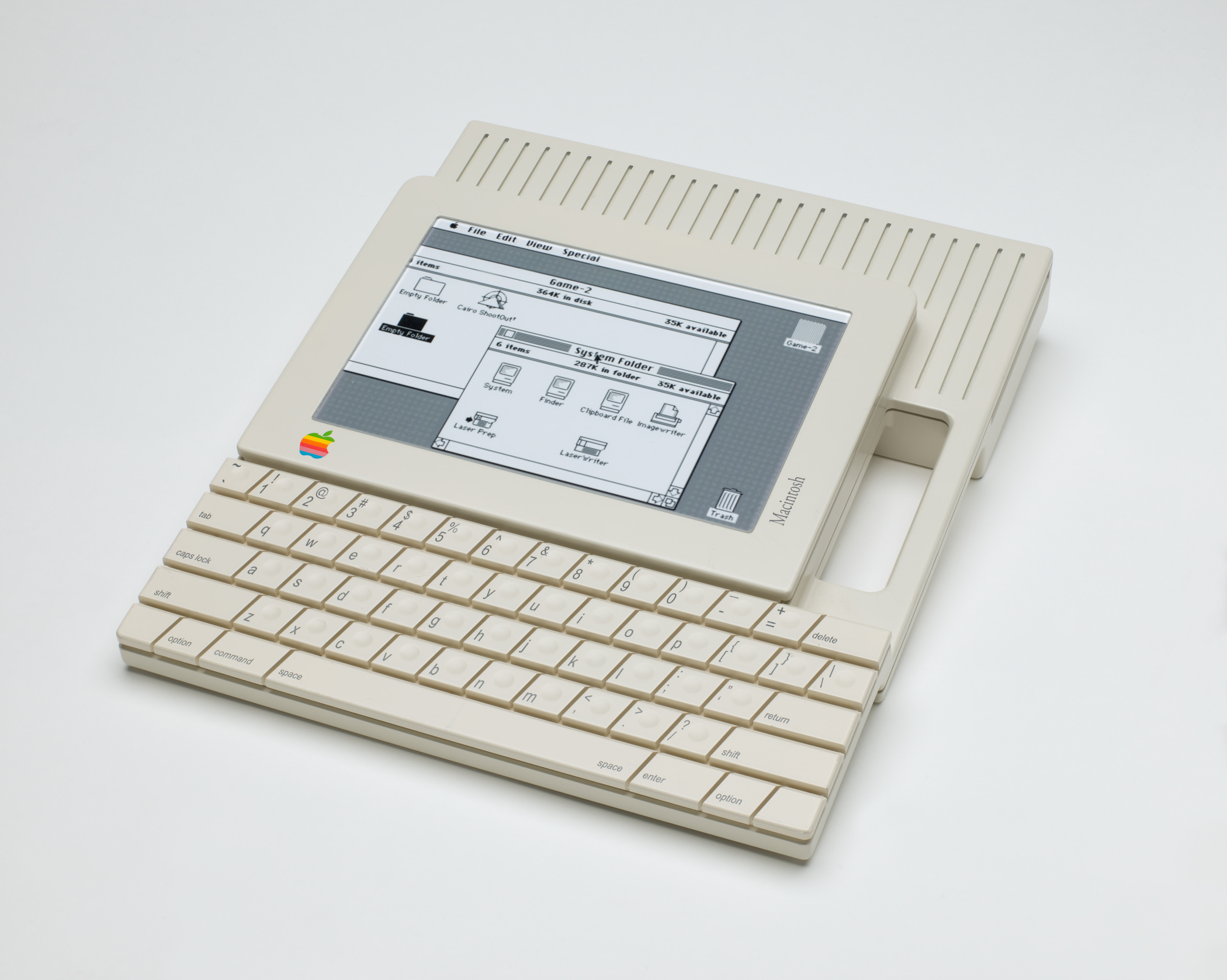A newly expanded and transformed San Francisco Museum of Modern Art opened this May, designed by Snøhetta. The firm, founded by the Norwegians Craig Dykers and Kjetil Thorsen, created a 10-story, 235,00-square-foot addition to the historic Mario Botta building, with a surprising, soaring, and undulating exterior meant to reflect and blend with city’s bay.
Whitewall sat down for breakfast with Dykers during a visit he made to Chicago. It was the morning after the architect had given a lecture at the Illinois Institute of Technology in which he discussed some of the key projects for Snøhetta—past, present, and future. That includes the Norwegian National Opera and Ballet in Oslo, a gleaming white building that seems to rise from the sea; the Bibliotheca Alexandrina (yes, that library); and the National September 11 Memorial Museum Pavilion. What struck us was the range of work the relatively young firm had done, from major cultural buildings to artists’ studios (like José Parlá’s), rooftop beehives, a small public park in Texas (because the town was bold enough to call), and libraries, for which they have a particular affinity (at North Carolina State University, Temple University, and in Far Rockaway).
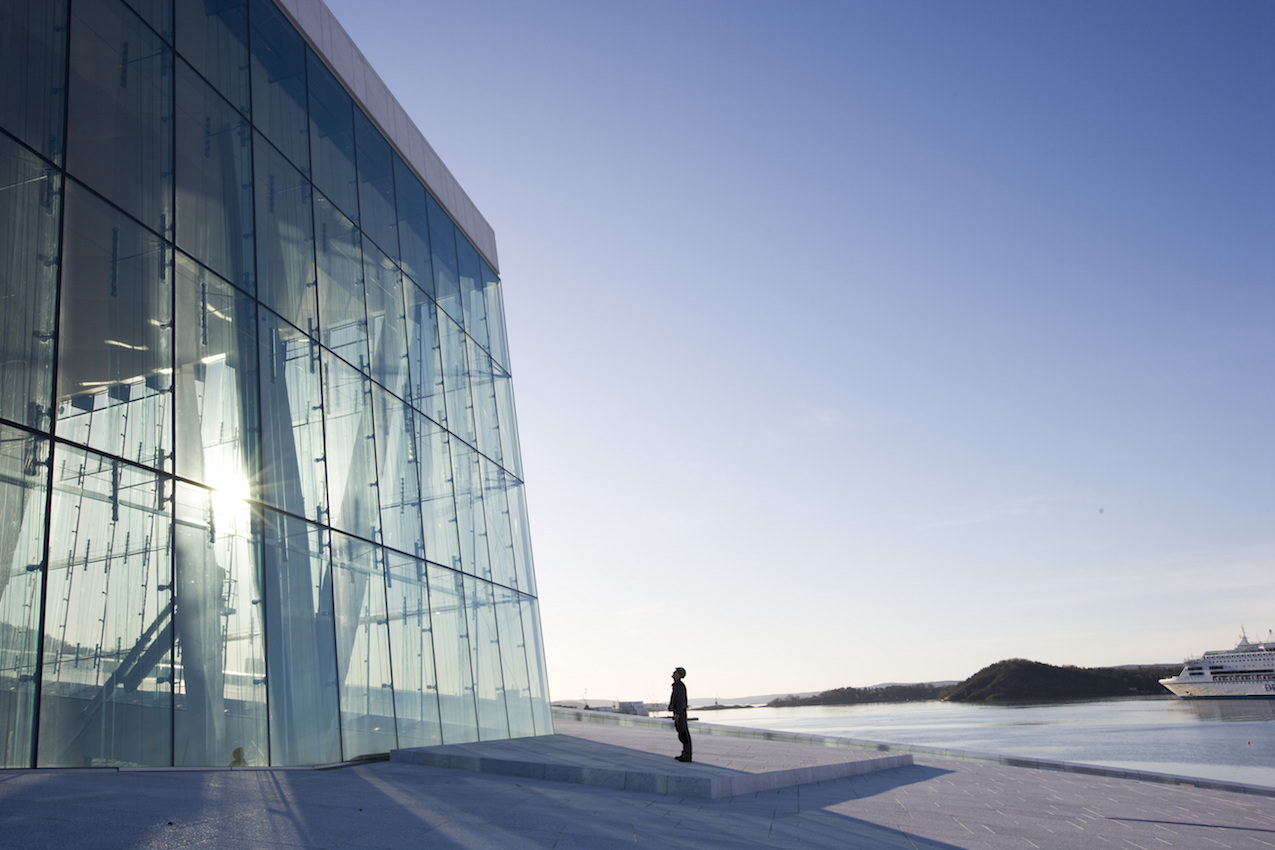
Norwegian National Opera And Ballet, photo © Trond Isaksen, Statsbygg.
Over eggs at the Pump Room, Dykers talked about the role of social sites, the effect of color on movement within space, stairs versus escalators, and the difference between architects and artists.
WHITEWALL: What were some of the biggest concerns for the expansion at SFMOMA?
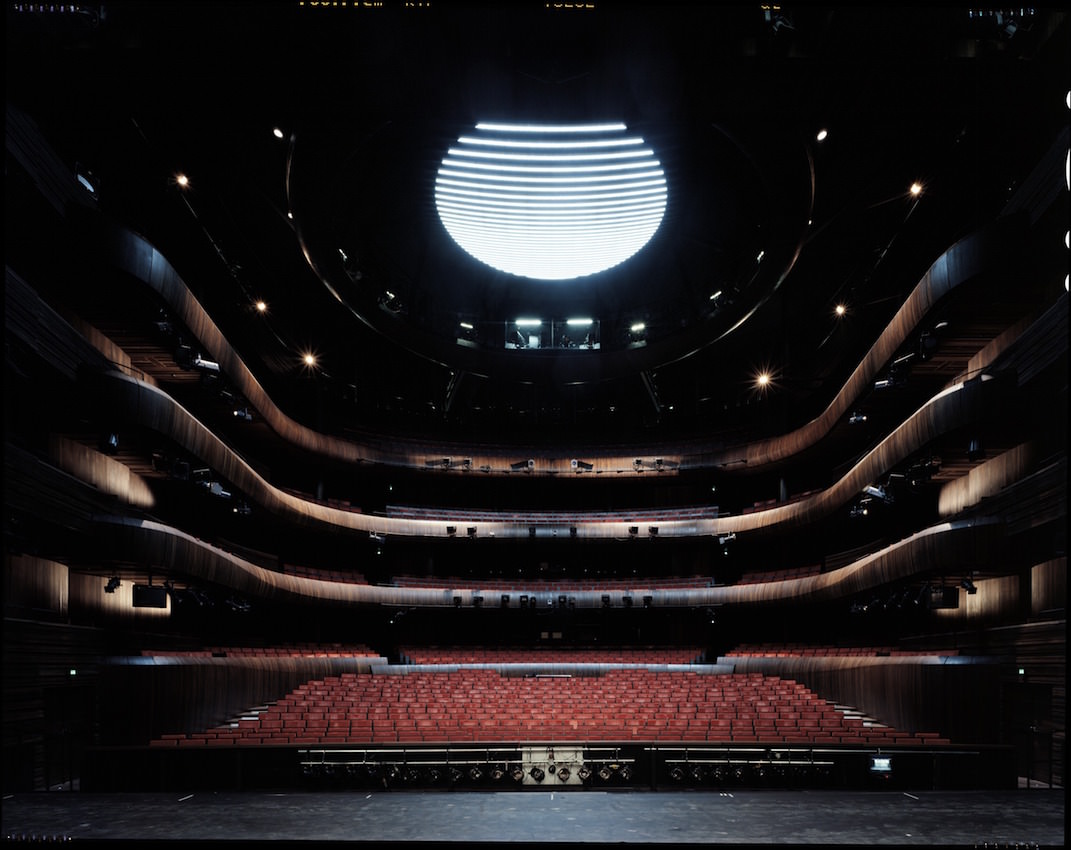
Norwegian National Opera And Ballet, photo © Helene Binet.
CRAIG DYKERS: Well, there were many interesting challenges, one of them being that the museum was looking to open up their visitor base, so that more diverse types of people could enjoy their collections from all walks of life. How do you create a place that nurtures work and nurtures the interaction between the visitor and the work itself? So the museum was very good about teaching us about art, so that when we designed the building, we weren’t often thinking about architecture in the traditional sense. We were thinking about it more in terms of the works of art themselves being the focus of how we would manage our design.
I don’t know how to explain it, but it’s almost as if the collection had a personality, and we were talking to it, and the building somehow grew out of that understanding. Generally you work the other direction, as a contemporary architect. You imagine form, you imagine objectivity about the building that has a logic that leads you to some kind of quality that we call a “concept.”
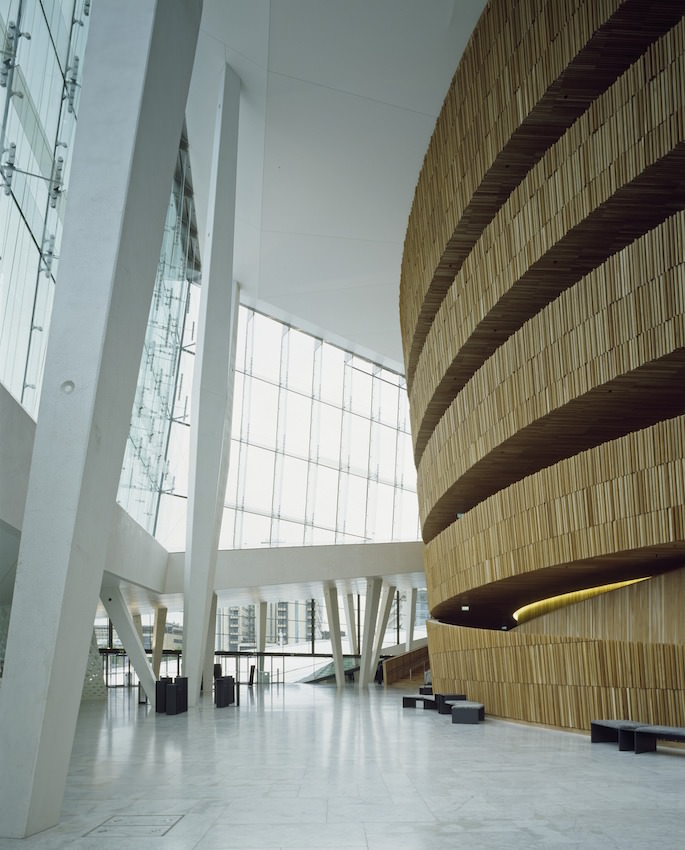
Norwegian National Opera And Ballet, photo © Gerald Zugmann.
Because of the value that we placed on the works of art themselves, we wanted to make sure that things didn’t get in the way of your experience. How do you make a vertical museum that people feel good being in? This one had to be seven stories high. How do you get people up and down seven stories and still have them be happy at the end of the day? So the vertical circulation became a very big aspect of the design thinking.
WW: So how do you do that?
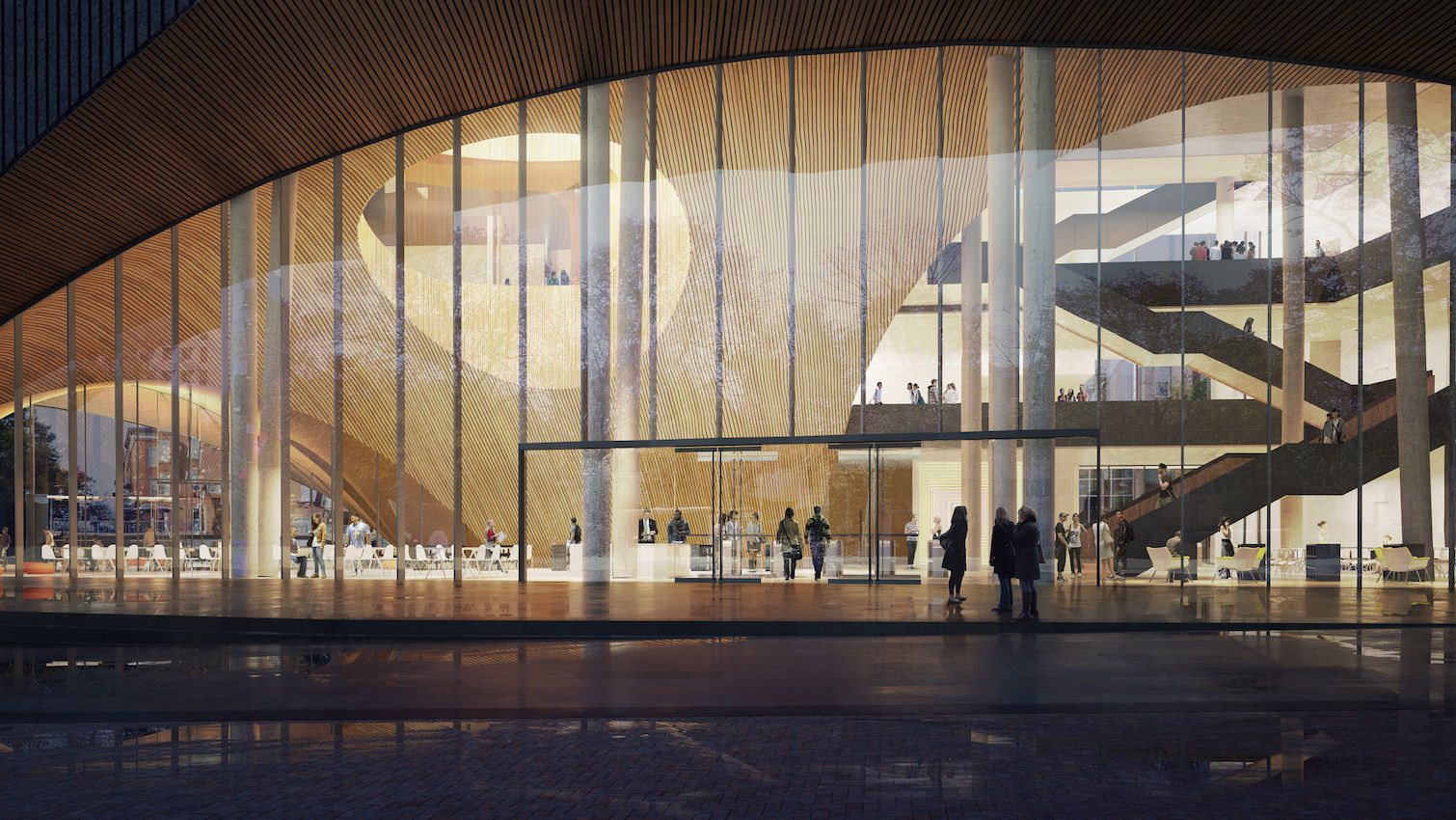
Temple University, © MIR & Snøhetta.
CD: We talked a lot about how people feel comfortable approaching a challenge—which essentially is stairs. Your mind associates stairs with expending energy. So we looked at ways in which we could almost camouflage the challenge. So, for example, the primary stair in the main atrium of the original [Mario Botta] building—the redesigned stair—you don’t approach it head-on so you can’t even see the steps; the handrails are solid, and it’s going off at an angle. Anything that you see at an angle usually feels less substantial. There’s a resting point, halfway, and then you turn 90 degrees and you go to another resting point, and then you turn 45 degrees, and then you’re finally at the top. And each time you turn, there’s a very carefully orchestrated view, so that you’re seeing something new along each stretch of the stair. And then they’re wide enough that you can meet people, or talk to people, or hang out with your friends, before you finish. It’s a socializing tool that also introduces a sense of ownership to your visit.
WW: Why not use an escalator?

Bibliotheca Alexandrina, photo © Gerald Zugmann.
CD: Well, first of all, they use a lot of energy. Why should we be using all that energy on something that our bodies can perform? Secondly, they’re transient modes of movement. So, when you’re on an escalator, you’re almost recumbent – you’re not expending any effort to think about what you’re doing, or to even interact with the space in any way whatsoever. You go into transitional mode, and you don’t really care.
WW: And elevators?
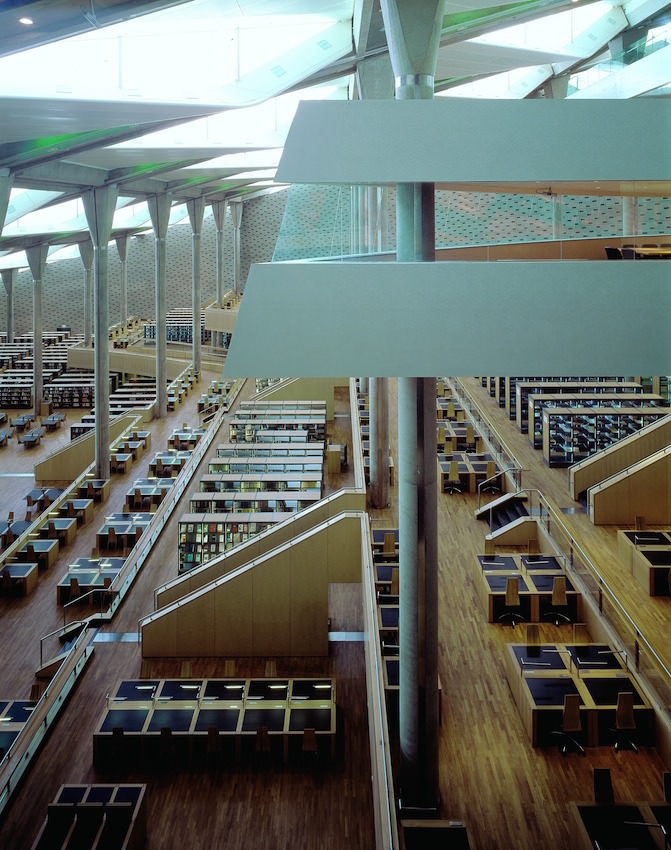
Bibliotheca Alexandrina, photo © Gerald Zugmann.
CD: Elevators are more like a time-travel machine. So, you know, you get into them, and you step out, and you’re in some other planet. So there’s no way to sort of gauge where you are.
And the acoustics in a room with a stair are very different than in an elevator—or on an escalator, which whirs and hums, all the time. And all of those little mechanical sounds get registered in your ear, and it changes your whole relationship to the place. I’m not saying that technology is evil. I’m just saying that it has its place, and we need to think about what that is. We need to manage technology rather than letting it manage us.
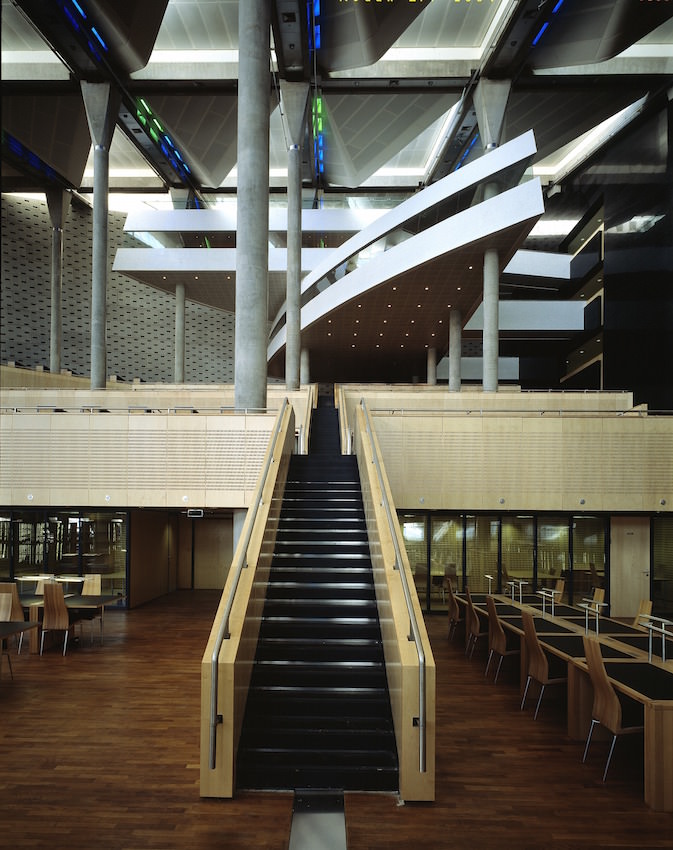
Bibliotheca Alexandrina, photo © Gerald Zugmann.
WW: Color is a tool you’ve described using as a way to direct people’s movement with a space, whether drawing them toward something or creating a sense of environment. How did you use color at SFMOMA? Did you have to try and not compete with the color in the art of the collection?
CD: You have to. There are various modes of thinking regarding color in relation to art. Clearly, in terms of modern art and modern design, white is the color of choice for being a so-called “neutral background” for works of art. But there are those people who say that the artists never paint on a white wall, nor are their studios pristine . . . they say that museums should have more texture and color and variety. But a museum doesn’t just portray one artist. They portray multiple artists, and they change, all the time, the works on display. So, how do you tailor a museum, then, in the respect of providing texture and color? The default, then, is white.
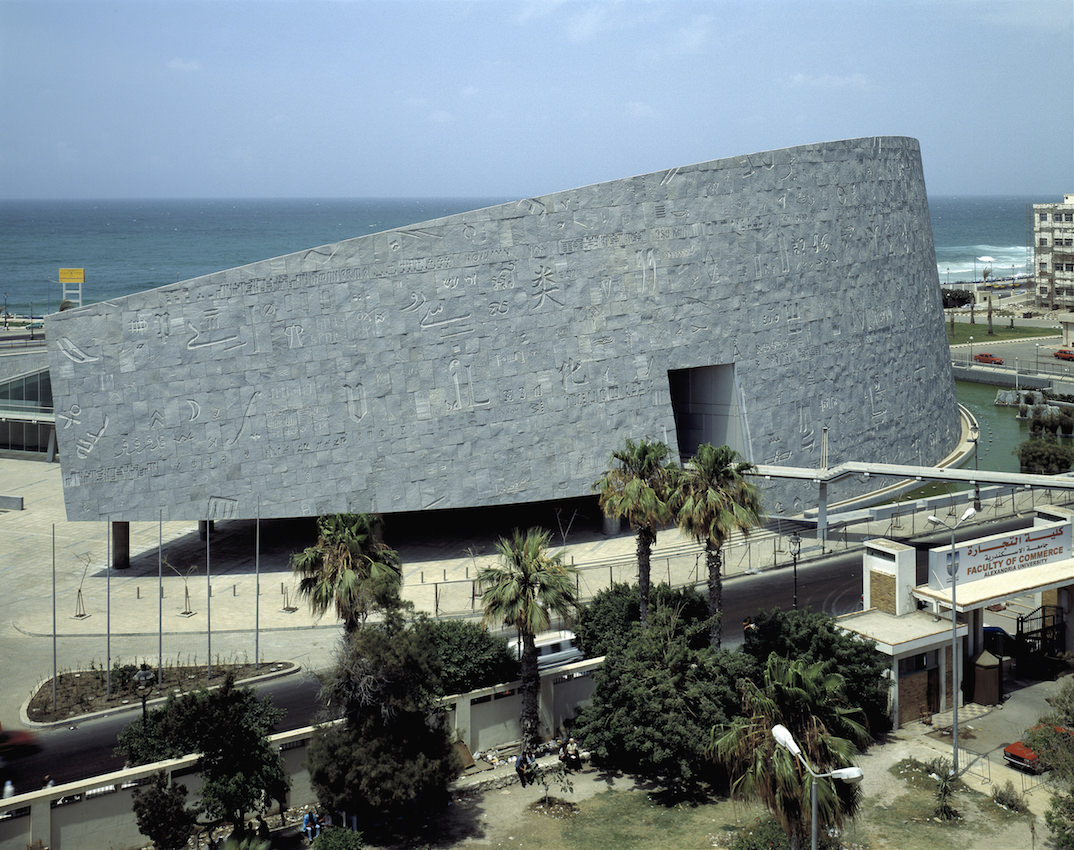
Bibliotheca Alexandrina, photo © Gerald Zugmann.
We didn’t break that, but there are, as you can imagine, thousands of kinds of white, infinite amounts of white. So a big part of what we did was work together with the museum to find out where we could have color—because denying people color in architecture is about as, problematic as denying art color. But the two have to interact. So our colors, in the public spaces, that are large congregation spaces, are muted, like the soft green of the garden, or the light browns of the natural woods we used, the maple, a gray of the floor, things like that. And then, once you get into the more private areas that are public, like the toilets, that’s where we put the color. It’s a kind of palate-cleansing moment, going to the toilet.
WW: And you have worked with artists throughout your career. Did any of those experiences inform your thought process within a museum?
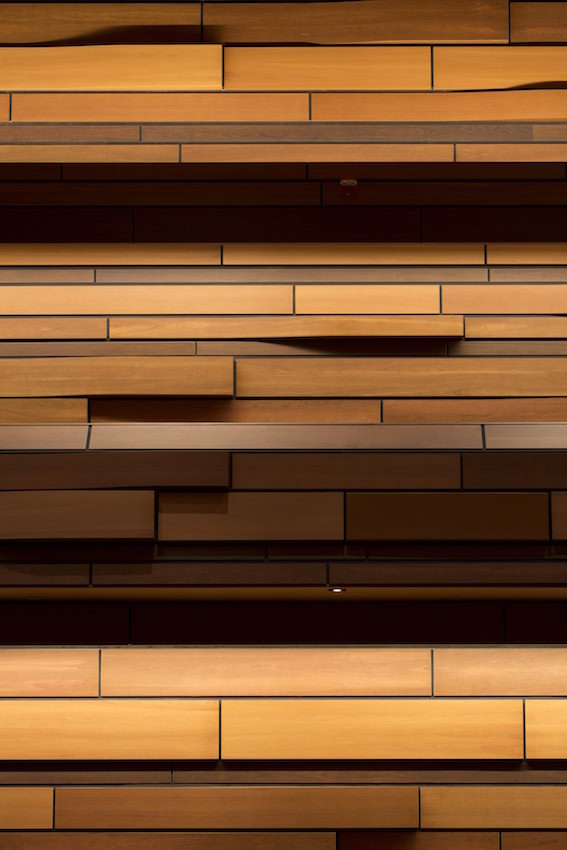
Isabel Bader Centre for the Performing Arts, Queens University, photo by Lorne Bridgman.
CD: Yes. We have an understanding that art and architecture might be related, but they’re not brother and sister. They’re kind of distant cousins. We respect the fact that a work of art is almost like a focused piece of architecture, because an artist has to think about many of the same things that an architect has to think about. Except it’s much more focused, in the scale of a human being, whereas a building, although having a human scale, is much larger, often, than a work of art. The zeitgeist of a work has to be appreciated in almost one standing, one sitting, and then, returning to it over time. So, if you interfere with that moment, the work isn’t reaching its full strength.
We’ve tried to remove interference from that moment. And that we’ve learned from, I think, understanding the way that many artists think. I used to work with artists before I was an architect. I worked with Bill Viola and a few other people, on helping them with their technical drawings and things like that. I was trying to be an artist myself, before.
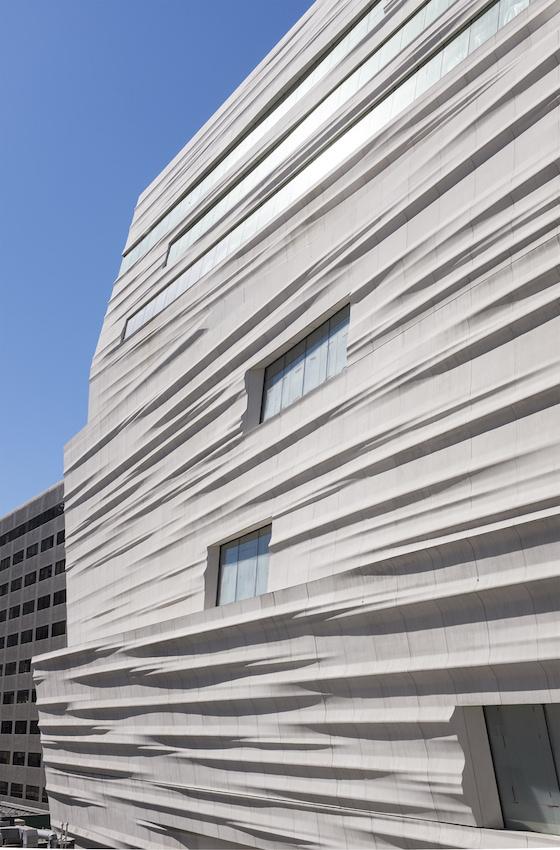
SFMOMA façade of Snøhetta expansion, photo © Henrik Kam, courtesy of SFMOMA.
WW: What was your work like? Do you still do it?
CD: Sketches. I draw large five-foot-high things that are quite substantial and unusual—I can show you later—but I refuse to call it art. It’s not at all, in my mind, art. But anyway, when you talk to an artist, the way they discuss their work is as though it were a living organism, a real thing that was alive, like their child, or something. And if you were to change it, it would be like changing your child, somehow. It’s not an abstract thing to them. And, for an architect, you cannot think that way. You have to be able to be remote from your work, because you’ll always have to change it and adjust it. It has to change through time; it’s a given that architecture changes through time.
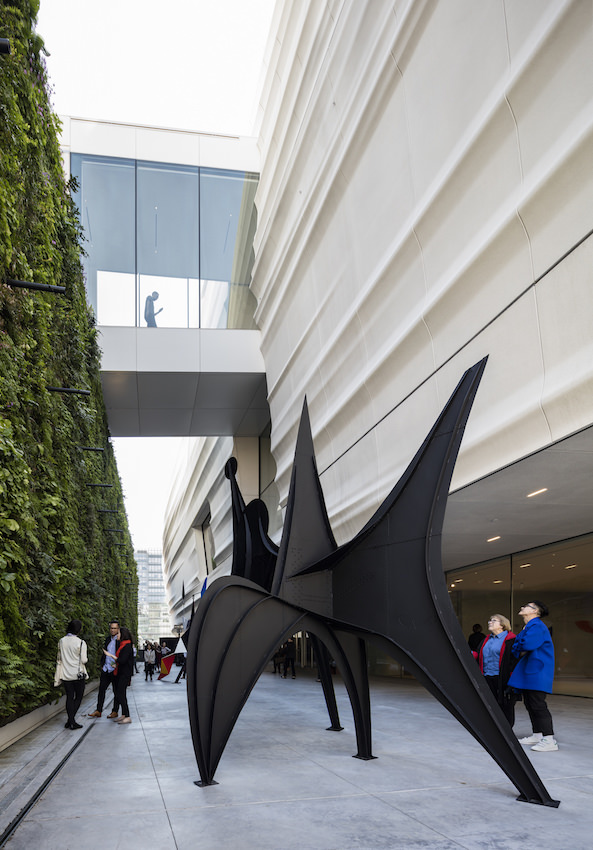
Pat and Bill Wilson Sculpture Terrace featuring Alexander Calder sculpture and the living wall, designed by Habitat Horticulture, at SFMOMA, photo © Henrik Kam, courtesy of SFMOMA.
WW: And it’s not yours.
CD: And it’s not ours. Exactly. So if you start to get close to it and treat it like one of your babies, you’re going to be very quickly heartbroken. So I think there are interesting ways to see the works and how they connect to each other, but they’re more complementary than similar.
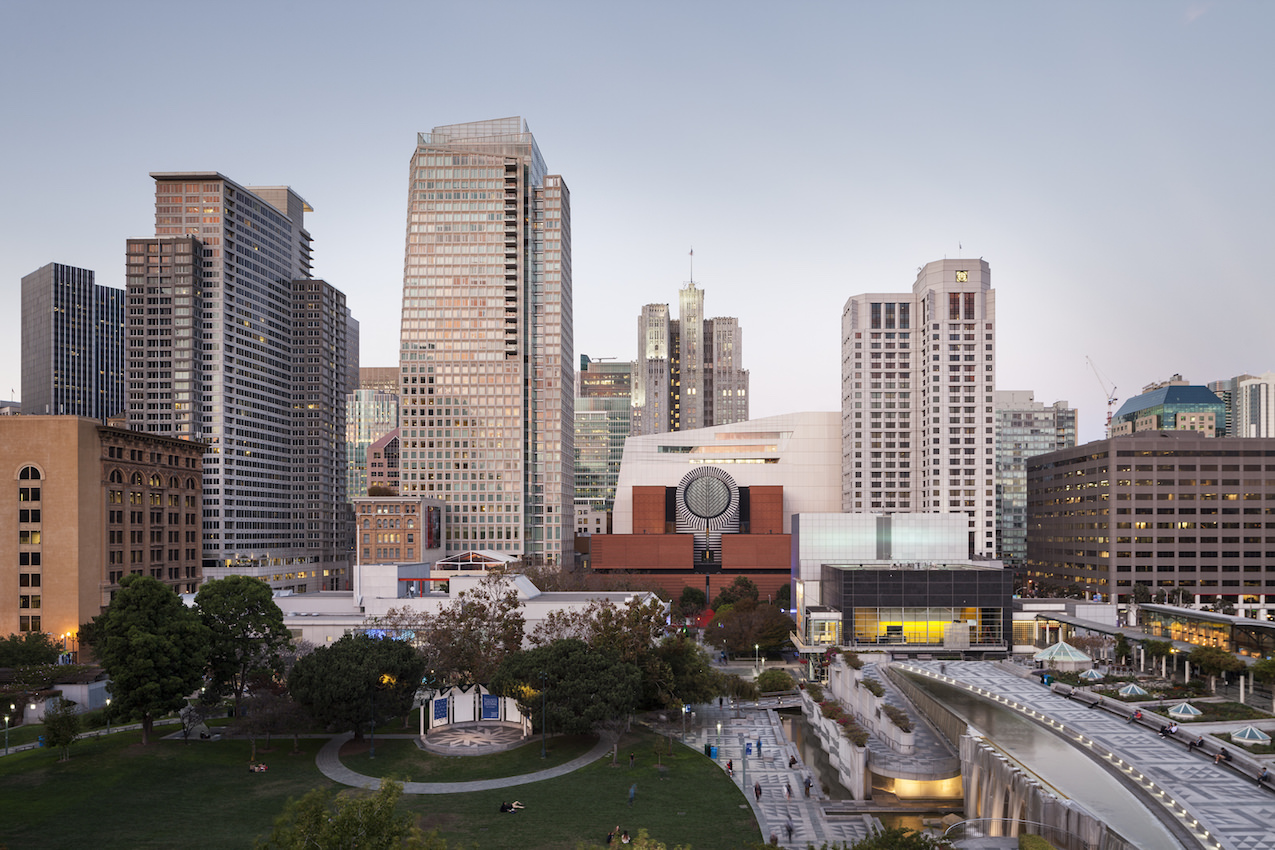
The new SFMOMA, view from Yerba Buena Gardens, photo © Henrik Kam, courtesy of SFMOMA.
WW: Something Snøhetta seems to do in a few projects is play with the exterior of a building, how it interacts with light and shadow, creating something a bit fuzzy rather than a hard line, something that shifts as you approach it or walk around it—like the James Hunt Library at North Carolina State University, the Calgary Central Library, and even SFMOMA.
CD: Yeah, it should feel ephemeral. Which is hard—I mentioned that about the North Carolina facade, where I said, “It’s very hard for an architect to make a soft line.” We pretend we do, just by making curvy shapes, but those aren’t soft lines; they’re just hard lines that are bent into curvy shapes. Getting that fuzziness, or the ephemeralness of something is sometimes very valuable. Not all the time, but there is a loss of feeling when everything doesn’t change. Which is why I’ve always had trouble with architects, who I can respect on some level, highly formalistic, but everything’s meant to be exactly as it’s meant to be. There’s no change in what it is. And so, we look to make things that sometimes you don’t recognize, or that even surprise you, on different visits.
We were very happy years ago when Ada Louise Huxtable characterized our work as “an architecture of engagement.” You can question what kind of engagement, of course. But there’s the large-scale kind of engagement that is found in iconic architecture, where it’s just the crowd. And then there’s the small-scale, where it’s an individual that has something of their own they want to carry around with them. And maybe it’s not even a picture. Which is a big deal today, because everybody’s taking pictures of everything, all the time. So how do you get people to put their camera down, actually, for a minute, is kind of intriguing.
I mean, for us, it’s great, because we can go online now and see how people react to our buildings. Almost in live, real time. You see people’s attitudes, very quickly, about your work. I could give a lecture of our work that only uses Instagram photos by others.
WW: That interest in connecting people really was there from the first project that you did—
CD: Yeah, the library in Egypt.
WW: Last night, during your lecture at IIT, you mentioned wanting to do more projects that involved younger people in terms of who the project was serving. Why is that?
CD: It was kind of a discovery that we had, when we did a very small project that was a doll’s house. We were asked to make a donation for a children’s hospital, for children with cancer, on the border with Mexico and Texas. And it was a nice request, and we realized we had to do something. I think they thought we would just give them a drawing, or whatever architects give in donations. We decided to do a doll’s house, and that we would design it and build it ourselves. And as we were making it, we realized there’s a clear typology of doll’s houses that exist out there, and they’re all simplified versions of anything, right? The houses are traditional looking, the rooms are very traditional, very static. It’s not only young girls, there are also obviously young boys who play with doll’s houses, and what message are they getting about life? They’re being told, “Well, you know, things are the way they are, and they’re static,” and domesticity is only being seen in one way. So, what if you made a doll’s house that was really interactive, transformable, like little boys’ toys are, like things that go from a truck to a robot? When they transform, there’s a feeling of accomplishment. With a doll’s house, the most transformation you can do is buy furniture and move it around. (Which is great. I’m not saying that’s not fun.)
So we didn’t provide any furniture. We wanted the child to. The doll’s house is hinged, and when you open it, everything changes, and there’s trees growing out of the living room, and the colors are all over the place, nothing really makes sense, and it’s different from different angles, and you can close it up and make it all secret, and then open it up again.
It just made us realize that there’s tremendous value in talking about design for young people, opening up their eyes to design, because we so often think only about adults, and the whole world seems about adults. And not even particularly old adults, because that’s a whole other thing, elderly people, and how ignored they are in this world. There’s a lot to learn from both directions. Children have an uncanny capacity to be irrational, and something we can learn from, and then elderly people have an uncanny ability to provide a kind of stability to life. You know? Because they can’t move as quickly, they can’t hold as much, they can’t do as much—so things kind of calm down, actually, in a strange way. When you get past a certain age.
This article is published in Whitewall‘s summer Design Issue.





